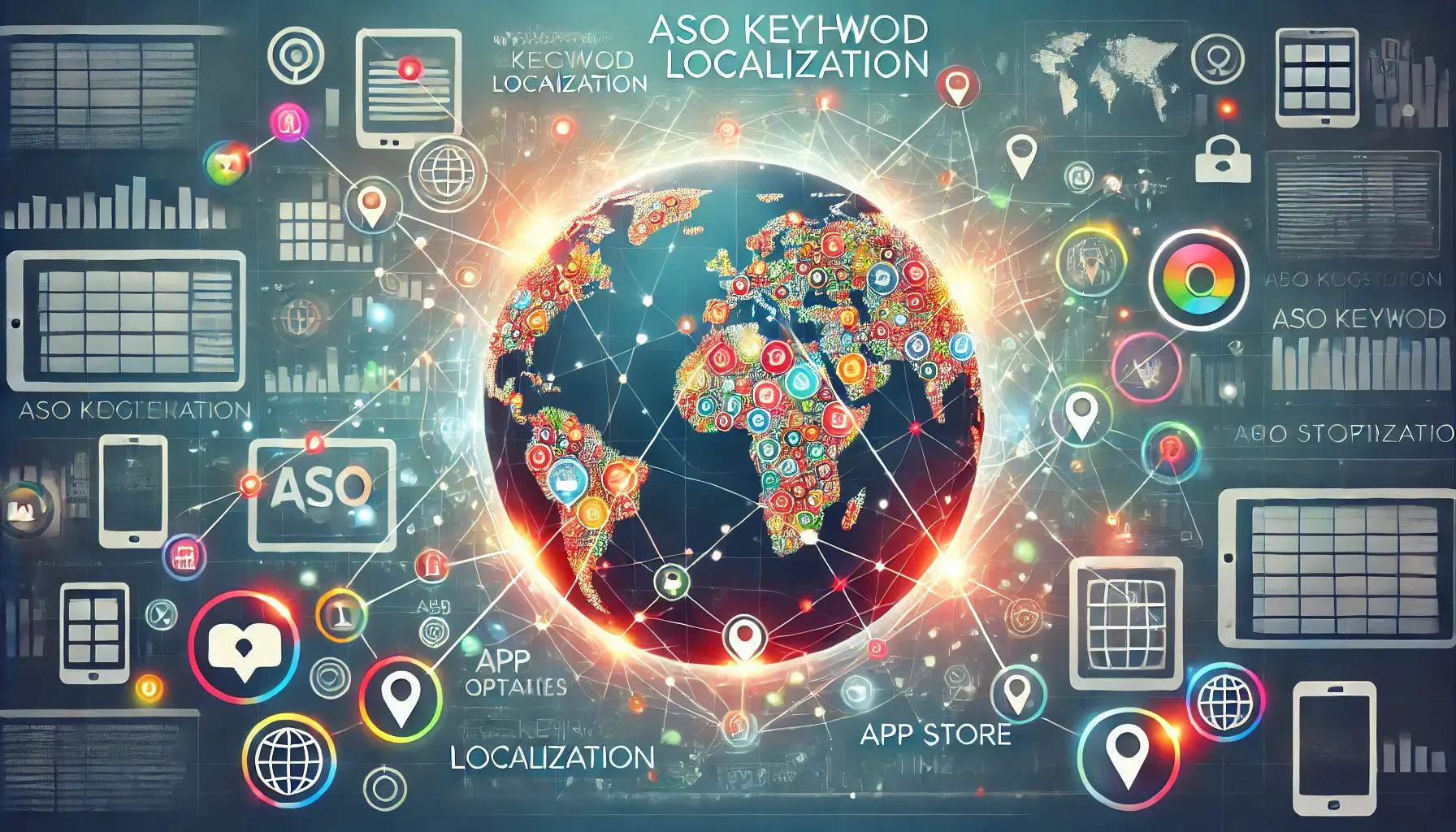WebRTC, short for Web Real-Time Communication, has revolutionized the way we think about peer-to-peer (P2P) communication in web applications.
This open-source project enables web browsers to communicate directly with each other, bypassing the need for an intermediary server.
This not only reduces latency but also improves the efficiency of data transfer, making it an ideal solution for a wide range of applications, from video conferencing to live streaming and file sharing.
The integration of WebRTC into modern web development practices marks a significant leap forward, offering developers the tools to create more dynamic, real-time user experiences.
The significance of WebRTC lies in its ability to facilitate direct communication between users’ browsers.
This is achieved through a set of APIs that allow access to the device’s camera and microphone, as well as the exchange of arbitrary data between browsers.
By leveraging these capabilities, developers can build robust, real-time communication solutions without the complexity and overhead associated with traditional server-based architectures.
The adoption of WebRTC in web apps signifies a move towards more interactive, engaging, and user-friendly web experiences, highlighting its importance in the current digital landscape.
- Understanding the Core Components of WebRTC
- Implementing WebRTC in Your Projects
- Challenges and Solutions in WebRTC Implementation
- Optimizing WebRTC Performance
- WebRTC’s Impact on Industry Standards and Practices
- Future Trends and Developments in WebRTC
- Best Practices for WebRTC Development
- Embracing the Future with WebRTC
- WebRTC for Peer-to-Peer Communication FAQs
Understanding the Core Components of WebRTC
Key APIs and Their Functions
At the heart of WebRTC are three main APIs that empower developers to implement real-time communication features.
The getUserMedia API provides access to the user’s camera and microphone, enabling web apps to capture audio and video streams.
This is the first step in establishing a media communication channel between peers.
The RTCPeerConnection API is responsible for managing the connection between two web browsers, handling the negotiation, establishment, and maintenance of the direct communication link.
Lastly, the RTCDataChannel API allows for the transfer of arbitrary data between peers, supporting a wide range of use cases from text chat to file transfer.
These APIs work in concert to facilitate a seamless P2P communication experience.
By abstracting the complexities of the underlying network protocols, WebRTC enables developers to focus on building feature-rich, user-centric applications.
The integration of these APIs into web apps not only enhances real-time interaction but also opens up new possibilities for innovative web services and applications.
Protocols Underpinning WebRTC
WebRTC’s efficiency and versatility are underpinned by a suite of protocols designed to navigate the challenges of real-time communication on the web.
Among these, the Interactive Connectivity Establishment (ICE) protocol plays a crucial role in overcoming network barriers, such as firewalls and NAT (Network Address Translation), ensuring that a direct connection between peers can be established regardless of their network environments.
Additionally, the Session Description Protocol (SDP) facilitates the exchange of media capabilities and preferences between peers, laying the groundwork for a successful connection.
Another key component is the use of STUN (Session Traversal Utilities for NAT) and TURN (Traversal Using Relays around NAT) servers.
These servers assist in the discovery of the public IP address of a device behind a NAT and, if necessary, relay data between peers when a direct connection is not feasible.
The orchestration of these protocols within WebRTC enables the establishment of robust, efficient, and secure P2P communication channels, making WebRTC a powerful tool in the arsenal of modern web developers.
The core components and protocols of WebRTC lay the foundation for creating dynamic and interactive web applications, highlighting the technology’s critical role in advancing web communication capabilities.
Implementing WebRTC in Your Projects
Integrating WebRTC into web applications opens a realm of possibilities for developers aiming to enhance user interaction through real-time communication.
The process, while straightforward, requires a nuanced understanding of WebRTC’s components and the sequence of actions that establish a peer-to-peer connection.
Here, we delve into the practical aspects of implementing WebRTC, providing a roadmap for developers to navigate through its setup and execution.
Starting with the getUserMedia API, developers can request access to a user’s camera and microphone.
This is the first step in capturing media streams that will be shared between peers.
The code snippet below illustrates how to request and display a video stream from the user’s camera:
- Request access to the user’s camera and microphone using
navigator.mediaDevices.getUserMedia(). - Attach the obtained media stream to a video element in the HTML to display the video feed.
navigator.mediaDevices.getUserMedia({ video: true, audio: true }) .then(stream => { document.getElementById('localVideo').srcObject = stream; }) .catch(error => { console.error('Error accessing media devices.', error); });Following the acquisition of media streams, the next step involves setting up a RTCPeerConnection to manage the communication between two peers.
This involves creating offer and answer messages, handling ICE candidates, and establishing a connection.
The process is as follows:
- Create a new RTCPeerConnection object.
- Attach the local media stream to the connection using
addTrack()for each media track. - Create an offer or answer, depending on the role in the connection initiation, and set it as the local description.
- Exchange the offer and answer between peers through a signaling server.
- Gather and exchange ICE candidates until a connection path is established.
Simultaneously, the RTCDataChannel API enables the creation of a channel for arbitrary data exchange.
This channel is multiplexed over the same peer connection established for media streams, allowing for the simultaneous transfer of data and media.
Establishing a data channel involves:
- Calling
createDataChannel()on the RTCPeerConnection object to create a new channel. - Setting up event listeners on the created channel to handle open, message, and close events.
- Using the
send()method to transmit data over the channel.
Integrating WebRTC into web applications not only enhances the user experience by enabling real-time communication but also challenges developers to think creatively about the use of media and data in interactive web services.
By following these steps and understanding the underlying processes, developers can effectively leverage WebRTC’s capabilities to build innovative and engaging web applications.
Incorporating WebRTC into web projects requires careful planning and execution but results in enhanced real-time communication capabilities, significantly improving the user experience.
Challenges and Solutions in WebRTC Implementation
While WebRTC offers a transformative approach to real-time communication, its implementation is not without challenges.
These hurdles range from network complexities to browser compatibility issues, each requiring specific solutions to ensure seamless communication.
Understanding these challenges is crucial for developers to effectively leverage WebRTC in their projects.
Network Complexity and Connectivity
One of the primary challenges in WebRTC implementation is dealing with various network configurations, such as NAT traversal and firewall restrictions.
These issues can hinder the direct peer-to-peer connection that WebRTC aims to establish.
To overcome this, WebRTC utilizes ICE, STUN, and TURN protocols:
- ICE (Interactive Connectivity Establishment): Automates the process of finding the best path for the communication between peers.
- STUN (Session Traversal Utilities for NAT): Helps in discovering the public IP address of devices behind a NAT.
- TURN (Traversal Using Relays around NAT): Acts as an intermediary relay server when direct P2P communication is not possible.
Browser Compatibility and Consistency
Another significant challenge is ensuring consistent behavior across different browsers.
Despite the standardization efforts, discrepancies in WebRTC implementation can lead to compatibility issues.
Developers can address this challenge by:
- Utilizing polyfills and libraries like adapter.js to abstract browser differences and normalize behavior.
- Regularly testing WebRTC features across different browsers and versions to identify and mitigate compatibility issues.
Security and Privacy Concerns
Security is paramount in WebRTC applications, especially when dealing with sensitive data transmission.
WebRTC incorporates several built-in security features, including:
- End-to-end encryption for all data and media streams, ensuring that communication cannot be intercepted.
- Secure RTP (SRTP) for encrypting media streams and Datagram Transport Layer Security (DTLS) for data channel encryption.
- Requiring user permission to access camera and microphone, enhancing privacy protection.
Despite these measures, developers must remain vigilant, implementing additional security practices such as secure signaling channels and authentication mechanisms to safeguard communication.
Scalability of WebRTC Applications
Scaling WebRTC applications to support a large number of users simultaneously presents another challenge.
Direct P2P connections are resource-intensive, and as the number of participants increases, the complexity and resource demands escalate.
Solutions to this issue include:
- Implementing a Selective Forwarding Unit (SFU) to manage media streams more efficiently by only sending and receiving necessary streams.
- Using a Multipoint Control Unit (MCU) for scenarios requiring large-scale broadcast or conferencing, where media streams are mixed server-side before distribution.
Addressing the challenges in WebRTC implementation is crucial for creating robust, efficient, and secure real-time communication applications.
Optimizing WebRTC Performance
Ensuring optimal performance in WebRTC applications is crucial for delivering a smooth and responsive user experience.
Performance optimization encompasses various aspects, from minimizing latency to enhancing video and audio quality.
By adopting best practices and leveraging WebRTC’s features effectively, developers can significantly improve the performance of their real-time communication applications.
Reducing Latency
Latency is a critical factor in real-time communication, affecting how users perceive the responsiveness of an application.
To minimize latency in WebRTC applications:
- Utilize TURN servers strategically to avoid unnecessary relays that can increase latency. Whenever possible, establish direct P2P connections.
- Implement adaptive bitrate streaming to adjust the video quality dynamically based on the user’s network conditions, reducing buffering and delays.
Improving Video and Audio Quality
The quality of video and audio streams directly impacts the user experience in WebRTC applications.
To enhance media quality:
- Employ advanced codecs like H.264 for video and Opus for audio, which offer superior compression and quality at lower bitrates.
- Take advantage of WebRTC’s built-in features such as automatic gain control, noise suppression, and echo cancellation to improve audio clarity.
Efficient Bandwidth Management
Effective bandwidth management is essential for maintaining high-quality communication without overloading network resources.
WebRTC provides mechanisms to control bandwidth usage, including:
- Setting maximum bitrate constraints on video and audio tracks to prevent excessive bandwidth consumption.
- Monitoring network conditions using the WebRTC statistics API and adjusting media quality accordingly to optimize bandwidth usage.
Scalability and Load Balancing
As WebRTC applications grow in user base and complexity, scalability becomes a key consideration.
To scale WebRTC applications effectively:
- Deploy a load balancer to distribute signaling traffic evenly across multiple servers, ensuring no single server becomes a bottleneck.
- Consider using cloud-based WebRTC solutions that can dynamically allocate resources based on demand, offering scalability and flexibility.
By focusing on these optimization strategies, developers can significantly enhance the performance of WebRTC applications, providing users with high-quality, real-time communication experiences.
It’s important to continuously monitor performance metrics and user feedback to identify areas for improvement and adapt to changing network conditions and user expectations.
Continuous performance optimization is key to maintaining the reliability and quality of WebRTC-based communication solutions.
WebRTC’s Impact on Industry Standards and Practices
The advent of WebRTC has not only revolutionized real-time communication on the web but also significantly influenced industry standards and practices.
Its ability to enable direct, browser-to-browser communication without the need for plugins or third-party software has set new benchmarks for accessibility, efficiency, and user experience in web applications.
This section explores how WebRTC is shaping the future of web development and communication technologies.
Setting New Benchmarks for Real-Time Communication
WebRTC has established itself as a cornerstone technology for real-time communication (RTC) on the web, pushing the boundaries of what’s possible in web applications.
By providing high-quality video, audio, and data transfer capabilities natively in web browsers, WebRTC has:
- Eliminated the need for proprietary plugins and software, making real-time communication more accessible and seamless for users.
- Enabled developers to create innovative RTC applications with lower development costs and faster time-to-market.
- Facilitated the emergence of new web-based communication platforms that challenge traditional telecom and conferencing solutions.
Influencing Web Development Practices
WebRTC’s integration into web development has led to a paradigm shift in how developers approach building communication features.
It has:
- Promoted the adoption of modern web standards and best practices, encouraging developers to design applications with real-time interaction at their core.
- Spurred innovation in web application design, with developers leveraging WebRTC to create immersive and interactive user experiences.
- Increased the emphasis on security and privacy in web applications, given WebRTC’s requirements for secure origins (HTTPS) and explicit user permissions for accessing media devices.
Driving Industry Adoption and Innovation
WebRTC’s impact extends beyond web development, influencing various industries and driving innovation in communication technologies.
Its applications range from telehealth and remote education to live streaming and collaborative tools, demonstrating its versatility and potential for transforming digital communication.
In these contexts, WebRTC has:
- Enabled businesses to offer enhanced customer service and support through web-based video and audio communication.
- Facilitated remote learning and telemedicine services, making them more accessible and interactive.
- Supported the development of collaborative online workspaces, improving productivity and team coordination in remote work environments.
As WebRTC continues to evolve, its influence on industry standards and practices is expected to grow, further shaping the future of web development and real-time communication.
By continuously adapting to and incorporating WebRTC’s advancements, developers and businesses can stay at the forefront of digital innovation, offering users more dynamic, secure, and engaging web experiences.
WebRTC’s transformative impact on web development and communication technologies underscores its role as a key driver of innovation and industry standards.
Future Trends and Developments in WebRTC
The landscape of WebRTC is continuously evolving, driven by technological advancements, changing user expectations, and new application scenarios.
As we look towards the future, several trends and developments stand out, promising to further expand the capabilities and applications of WebRTC.
These future directions not only highlight the potential growth areas for WebRTC but also underscore the technology’s role in shaping next-generation web communication.
Enhanced Machine Learning and AI Integration
One of the most exciting prospects for WebRTC is its integration with machine learning (ML) and artificial intelligence (AI) technologies.
This convergence has the potential to:
- Improve real-time communication with features like automated transcription, real-time language translation, and intelligent noise cancellation.
- Enable advanced analytics on media streams, facilitating sentiment analysis and engagement measurement during video calls.
- Drive the development of innovative applications that leverage AI to enhance user interactions and experiences in real-time communication.
Increasing Adoption of Augmented and Virtual Reality
As augmented reality (AR) and virtual reality (VR) technologies mature, their integration with WebRTC opens up new avenues for immersive communication experiences.
This trend is likely to:
- Accelerate the creation of web-based AR/VR meeting spaces, offering users more engaging and interactive ways to connect.
- Expand the use of WebRTC in remote training and education, where AR/VR can provide hands-on learning experiences.
- Enhance social interaction in virtual environments, making them more accessible through browser-based WebRTC connections.
Advancements in Edge Computing and IoT Integration
The rise of edge computing and the Internet of Things (IoT) presents new opportunities for WebRTC applications.
By bringing computation closer to the data source and integrating with IoT devices, WebRTC can:
- Reduce latency and improve the efficiency of real-time communication in smart home, industrial, and urban applications.
- Enable direct, secure communication between IoT devices and web applications, facilitating real-time monitoring and control.
- Support the development of innovative services that combine real-time communication with edge computing capabilities, such as emergency response systems and smart city infrastructure.
The future of WebRTC is marked by these and other developments, each contributing to the expansion of WebRTC’s ecosystem and its applications across different domains.
As WebRTC continues to evolve, staying abreast of these trends will be crucial for developers, businesses, and researchers looking to harness the full potential of real-time web communication.
The ongoing advancements in WebRTC, from AI integration to AR/VR and IoT applications, highlight the technology’s growing impact on the future of web communication.
Best Practices for WebRTC Development
Developing WebRTC applications involves more than just understanding the technology’s core concepts and capabilities.
To create robust, efficient, and user-friendly real-time communication solutions, developers must adhere to a set of best practices.
These guidelines not only ensure the optimal performance of WebRTC applications but also enhance the overall user experience.
Let’s explore some of the key best practices that developers should follow when working with WebRTC.
Ensuring Robust Security Measures
Security is paramount in WebRTC development, given the sensitive nature of real-time audio and video communication.
Implementing strong security measures is essential to protect user data and privacy.
Developers should:
- Use HTTPS for all WebRTC applications to ensure secure communication between the client and server.
- Implement proper authentication and authorization mechanisms to control access to media streams and data channels.
- Regularly update WebRTC and related libraries to incorporate the latest security patches and improvements.
Optimizing Application Performance
Performance optimization plays a critical role in delivering a seamless real-time communication experience.
To optimize the performance of WebRTC applications, developers should:
- Monitor network conditions and adjust the quality of media streams dynamically to prevent disruptions.
- Minimize the use of bandwidth-intensive features when network conditions are poor, and prioritize essential data transmission.
- Employ techniques such as lazy loading and asynchronous operations to reduce the initial load time of applications.
Enhancing User Experience
The success of a WebRTC application heavily relies on its user experience.
Developers can enhance user engagement and satisfaction by:
- Designing intuitive and responsive user interfaces that accommodate various devices and screen sizes.
- Providing clear feedback to users about the application’s state, such as connection status, media access prompts, and error messages.
- Incorporating user-friendly features, such as easy-to-use controls for camera and microphone settings, and visual indicators for audio levels.
Testing Across Browsers and Devices
Given the diverse ecosystem of web browsers and devices, thorough testing is crucial for ensuring compatibility and reliability.
Developers should:
- Test WebRTC applications across a wide range of browsers, including their different versions, to identify and address compatibility issues.
- Conduct testing on various devices, from smartphones to tablets and desktops, to ensure consistent functionality and performance.
- Utilize automated testing tools and frameworks to streamline the testing process and uncover potential issues early in development.
By following these best practices, developers can significantly improve the quality and reliability of their WebRTC applications, leading to better user experiences and increased adoption of real-time communication solutions.
Adhering to best practices in WebRTC development is crucial for creating secure, high-performance, and user-centric real-time communication applications.
Embracing the Future with WebRTC
The journey through the intricacies of WebRTC for peer-to-peer communication in web apps reveals a technology that is not just transformative but also emblematic of the future of digital interaction.
WebRTC stands as a testament to the power of open web standards, driving innovation and accessibility in real-time communication.
Its impact stretches far beyond the technical realm, influencing user experiences, development practices, and even industry standards.
As we look towards the horizon, the potential of WebRTC continues to unfold, promising new avenues for connection and collaboration.
The Pillars of WebRTC Success
At the core of WebRTC’s success are its robust security measures, unparalleled performance optimization capabilities, and the seamless user experiences it enables.
These pillars support the creation of applications that are not only efficient and reliable but also intuitive and engaging for users.
The emphasis on security, with end-to-end encryption and strict access controls, ensures that WebRTC applications meet the highest standards of privacy and data protection.
Performance optimization, facilitated by adaptive streaming and network condition monitoring, guarantees that real-time communication remains fluid and responsive across various network environments.
Moreover, the focus on user experience, with responsive design and clear feedback mechanisms, makes WebRTC applications accessible and enjoyable for all users.
Charting the Path Forward
The future of WebRTC is bright, illuminated by ongoing advancements in machine learning, artificial intelligence, augmented reality, and the Internet of Things.
These developments promise to enrich WebRTC applications with new features and capabilities, from real-time language translation and intelligent noise cancellation to immersive virtual environments and direct IoT device communication.
As WebRTC continues to evolve, it will undoubtedly play a pivotal role in shaping the next generation of web communication, breaking down barriers and creating new opportunities for human connection.
Conclusion
In conclusion, utilizing WebRTC for peer-to-peer communication in web apps represents a significant leap forward in how we connect, share, and collaborate online.
Its ability to facilitate direct, real-time communication between browsers, without the need for intermediary servers or plugins, marks a new era of internet communication.
As developers and businesses continue to explore and expand the capabilities of WebRTC, we can expect to see even more innovative and impactful applications emerge.
The journey of WebRTC is far from over; it is just beginning.
With each advancement and application, WebRTC is not only changing the way we communicate but also how we interact with the world around us.
The future of web communication is here, and it is powered by WebRTC.
Quality web design is key for a great website! Check out our service page to partner with an expert web design agency.
WebRTC for Peer-to-Peer Communication FAQs
Explore the most common inquiries surrounding WebRTC and its pivotal role in enabling peer-to-peer communication in web applications.
WebRTC, or Web Real-Time Communication, is an open framework that enables real-time communication, such as video and audio, directly in web browsers without plugins.
No, WebRTC supports real-time exchange of audio, video, and arbitrary data, making it versatile for various communication needs.
WebRTC primarily uses UDP to optimize for speed and performance in real-time communication, though it can fall back on TCP if necessary.
While WebRTC itself doesn’t impose bandwidth limits, actual bandwidth usage can be influenced by network conditions and application-specific constraints.
Yes, WebRTC’s RTCDataChannel API allows for the transfer of binary data along with text, enabling a wide range of applications beyond audio and video.
Yes, WebRTC is an open-source project that is free to use, making it accessible for developers to integrate into their web applications.
WebRTC uses ICE, STUN, and TURN protocols to navigate network barriers like NATs and firewalls, ensuring reliable peer-to-peer communication.
The signaling server facilitates the initial discovery and negotiation between peers in WebRTC, coordinating the exchange of media and data channel information.










